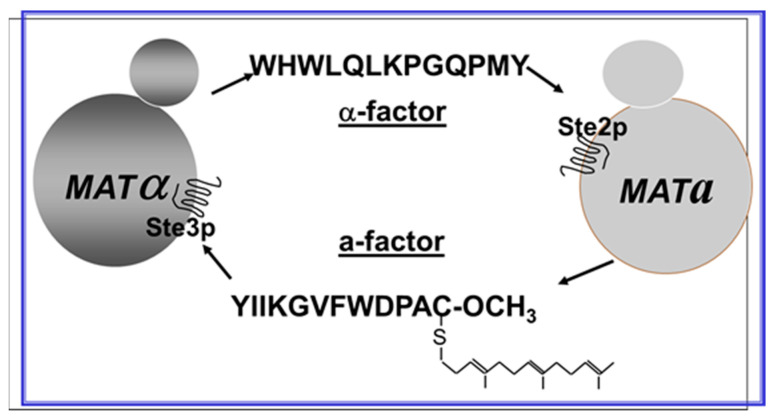Figure 1.
A diagrammatic representation of the pheromones (α-factor and a-factor) mediating the sexual conjugation of Saccharomyces cerevisiae haploid cells of opposite mating types (MATα and MATa). MATα and MATa cells secrete their cognate pheromones to prepare their opposite mating type for mating (conjugation), resulting in a diploid cell. Ste2p and Ste3p are the membrane-bound receptors on MATa and MATα cells, respectively, that recognize their bound pheromones to arrest the recipient cell in the G1 phase of the cell cycle in preparation for conjugation. Pheromones and hormones perform physiologically equivalent functions; pheromones act between individuals of the same species, whereas hormones are produced and act within an individual.

